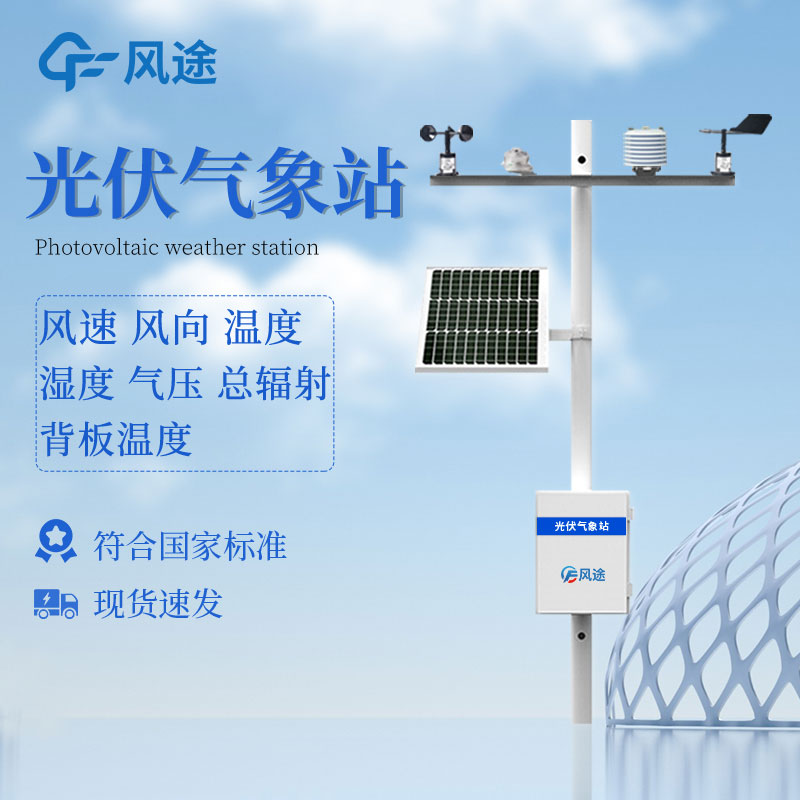Meteorological environment monitoring equipment supplier
Insist on doing high-precision customer favorite technology products
Photovoltaic weather station is a device specially used to monitor and record meteorological conditions around solar photovoltaic power stations. Common types are grid-connected photovoltaic weather stations, distributed photovoltaic weather stations, solar radiation standard observation stations and so on. Its main function is to provide real-time and accurate meteorological data for the planning, construction and operation of photovoltaic power plants to maximize solar power generation efficiency and improve system reliability.
Photovoltaic weather station manufacturers recommend wind road technology, the company's main products include photovoltaic weather stations, automatic weather stations, meteorological instruments, etc., is a research and development, production, sales in one of the manufacturers. It has a number of patents and technologies in the field of automatic weather stations, and the product quality is reliable and the price is reasonable. The company's photovoltaic weather stations use advanced sensors and data acquisition and processing technology to monitor weather data in real time, and store and analyze the data through a cloud platform. Its photovoltaic weather station has the characteristics of high integration, low power consumption, high efficiency and energy saving, and also has a perfect after-sales service system.
Photovoltaic weather stations may be equipped with the following sensors:
Solar radiation sensor: used to measure the intensity and total radiation of solar radiation.
Light sensor: Used to measure the intensity and direction of light in the environment.
Temperature sensor: Used to measure the ambient temperature and the surface temperature of the panel.
Humidity sensor: Used to measure ambient humidity and assess the moisture content in the air.
Wind speed sensor: Used to measure wind speed and direction, to evaluate the wind level.
Wind sensor: Used to measure wind direction and help assess changes in wind direction.
Rainfall sensors: Used to measure rainfall and assess the size and frequency of rainfall.
Pressure sensors: Used to measure atmospheric pressure and assess meteorological conditions.
